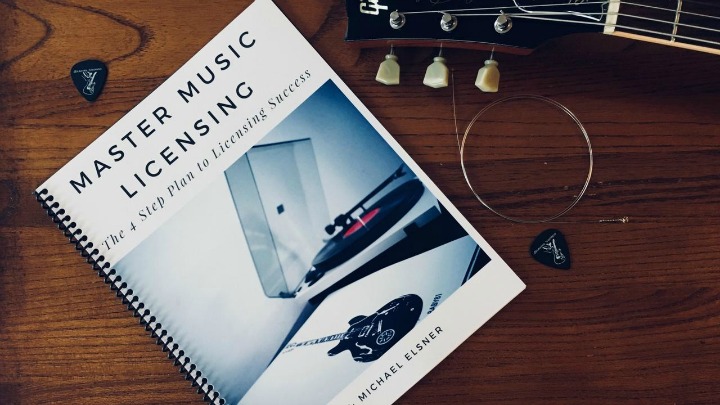4 Steps To Help You Get Your Music Licensed
US Free e-book outlines the process to get you started 07/03/18

|
As many of you know, earning a living from music is tough, most will have to diversify to create an income. One area that can keep on giving is the area of music licensing. Creating music to be used in TV Shows, advertising and film work. Many of us also will create plenty of tracks that never see the light of day.
One person who’s created plenty of successful music for license, is Michael Elsner, as well as his work as a live and session guitarist, he also writes specifically for licensing, with over 2000 song placements in TV shows, film trailers, commercials and video games. He’s written a couple of articles for us in the past.
Michael has devised a series of four steps which will help people help get started.
They are outlined here, and yeah, Michael is running an online course later this month if you want to get into the nitty gritty, but he’s created a FREE E-book:
The 4 Step Plan to Licensing Success available here; https://www.mastermusiclicensing.com/a/7050/aLhXayCd.
Step 1: Build Your Catalog:
The larger your catalog, the more opportunities you’ll have for successfully placing your music. Also, the more varied your catalog is stylistically, the more opportunities you’ll have for successfully placing your music.
Create Something Today
Write as often as you can. Write without rules. Write what fulfills you. Create freely and without any self-imposed boundaries. Create something today, and if you can, create something everyday.
Step 2: Create Valuable Content
Whether you write vocal songs or instrumental tracks, you can always increase the value of your catalog, and the opportunities for placements, by creating multiple versions of each song. By muting the vocals, a vocal song can instantly generate an instrumental track. You can create a ‘No Melody’ mix of an instrumental track by muting the melodic instruments. Also, experiment with creating an “Acoustic Mix” or a “Stripped Down Mix” by muting the drums and other electric instruments.
A Quality Catalog is a Magnet for Placement Opportunities
By creating these alternate mixes, you can immediately add 4 to 5 extra licensable tracks to your catalog. We can take this a step further by creating individual 15, 30, and 60 second “Cut Down Mixes” as well as printing “Stem Mixes,” which are commonly requested for commercial placements.
Step 3: Master Metadata
Metadata is the information that is embedded into an audio file. This information allows the song to show up in a search of specific keywords.
Your goal, as a music content creator, is to make sure that your song will always show up in a search for music. Simply stated, it doesn’t matter how perfect your song may be for a specific scene, if it doesn’t show up in a music supervisor or editor’s search, it will never get licensed.
The Golden Ticket
Mastering metadata is the golden ticket to song placements. This is easily the most important step that you will take to ensure the successful licensing of your material. Metadata can be input onto your audio file via iTunes. However, it’s important to note that WAV files require an additional 3rd party program to retain the metadata. For this reason, I recommend using only AIFF files unless otherwise requested.
Step 4: Get Your Music Heard
The last step is to get your music into the right hands, and this is the one people have the most trouble with. The goal here is to always show the value your music catalog brings to the person you’re reaching out to, whether that be a music supervisor, or a music library.
Reaching Out
This step requires some research and due diligence on your part. IMDB.com is the best way to look up what shows a music supervisor is working on, and musiclibraryreport.com is the best place to research music libraries.
Once you know who you want to contact, make sure you clearly:
-
Let them know you have a quality catalog of music (Step 1: Build Your Catalog)
-
Let them know you can supply them with multiple versions of each song (Step 2: Create Valuable Content)
-
Let them know that your music is easily searchable and licensable (Step 3: Master Metadata)
Do not attach your audio files to an email, instead include a link where they can audition your music online. When you follow these steps, 9 times out of 10, you will find that you get a positive response.
FREE E-book, The 4 Step Plan to Licensing Success at https://www.mastermusiclicensing.com/a/7050/aLhXayCd.
More From: MICHAEL ELSNER
- Blog: Setting Up A Mic Shootout 31-Mar-14
Even more news...







